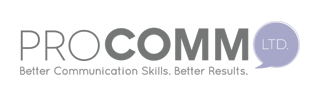It’s high-stakes when you are presenting to the C-suite. Decisions made at that level resonate throughout the company, and can have a lasting effect on your own career. To work effectively with CXOs (an abbreviation for any C-suite executive), you’ll need to be very aware of your reasons for being there, be exceptionally well-prepared, give a sterling presentation, and follow up appropriately.
In this issue, we’ll look at research and preparation, and in the next one, we’ll help you shine in your presentation and follow-up.
Building trust with your audience is crucial in the C-suite. As Charles Green and Andrea Howe say in their book The Trusted Advisor Fieldbook:
“C-level executives are bombarded by people trying to sell them products, services and ideas all the time, but they are rarely approached by people who are willing to put the executive first, the relationship second, the sale third, and their own ego last.”
If you can be that person, you will be ahead of the game when you walk in the door. Building trust involves being trustworthy, which means you’ll need to do your due diligence first. Thorough research will give you something to offer that will help the executive and build the relationship right off the bat.
Preparing for a C-suite presentation, just like any other presentation, must involve getting to know your audience, so you have a solid understanding of their needs and concerns. Here at ProComm, we use the mnemonic K.N.O.W. to remind us of the steps we need to take to understand our listener.
- Knowledge: What is the knowledge level of your listener about your subject? When dealing with CXOs, you need to consider the fact that their level of knowledge often needs to be more broad than deep to match their sphere of influence. Don’t make assumptions based on their current position – research individual backgrounds as well.
- Needs and Concerns: What specific needs and concerns of your listeners will you be addressing? There are some important needs and concerns that apply only at the CXO level – we’ll look at them in more detail below.
- Opinion and Attitude: What is the listener’s attitude about your subject, your company, and you?
- Who: Get specific about other people that will be attending your presentation – names, titles, departments represented, number of people.
Once you have this level of knowledge about your audience, you can begin to design your presentation around the specific needs of your audience, in a way that will engage them and hold their attention.
As you prepare your presentation, keep in mind these specific constraints and concerns that are unique to CXOs:
- They have a broad sphere of influence, and responsibility across the entire organization. They are going to be more interested in the whys than the hows. Use their language – words like strategy, change, impact.
- CXOs are invariably in a constant state of information overload. To help them process your information, outline, simplify, and clarify. Help them focus on what they really need to know, while making sure they have backup information that goes into more detail if and when they need to access it.
- CXOs have to keep in mind the best way to distribute company resources – and there are always limits on these resources. Indicate that you understand this by demonstrating value, offering real solutions to real problems. Show them that you are aware of their options, and be ready to discuss those options.
- The decisions a CEO needs to make are often complex and multi-factor. Instead of pushing towards the decision you want, ask pertinent questions, seek to understand the different factors and complexities. This allows you to become an ally, instead of just another person who wants something from them.
Your preparation for this presentation should involve careful attention to organizing your information, the elimination of anything extraneous, and a focus on giving the CXO a clear overview as quickly as possible. (The ProComm Message Planner™ is a great tool for this!) Minimize your slides – 5 not 50. Print backup information to leave behind. Do the research that will help you understand the complexities involved in the CXO’s final decision.
We’ll cover the actual presentation and follow up in the next issue. If your team regularly presents to the C-suite, ProComm offers a variation of our flagship “Present with Confidence” program that focuses on presenting to the C-suite. Contact us if you’d like more information.
Present with Confidence: Business communication is about conveying information to your listener and inspiring them to take action. Call us now to find out how we can help your people hone and polish their communication skills and project the confidence and credibility that bring results.
Confidence, credibility and personal style are essential components in connecting with a listener.Successful people learn by doing and seeing themselves as others see them. This course utilizes a highly participatory format which accelerates learning while at the same time creates a fun and supportive environment for the participants. To read more about the program, click here. For more information, contact
us



